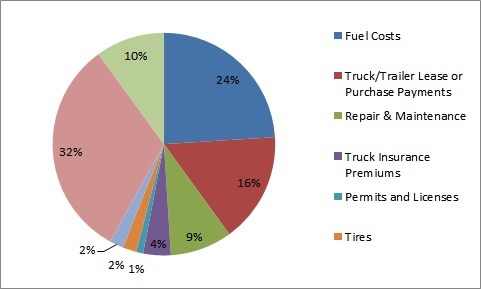
Streamlining DSD Route Accounting Process through Mobile Apps
Distribution and supply chain management is a highly dynamic industry. The key to success lies in harnessing cutting-edge technologies like mobility applications to streamline Direct Store Delivery (DSD) route accounting processes. In this article, we define DSD route accounting and explain how the strategic integration of mobility applications can revolutionize DSD operations, enhancing efficiency, accuracy, and overall productivity.
Defining Route Accounting
DSD Route accounting is the art of managing financial transactions, inventory, and sales data associated with delivering products directly to retail stores or customers. It is about ensuring smooth operations, from product delivery to financial reconciliation.
What is a Mobility Applications
A mobility application, often referred to as a mobile app, is a software application designed to run on mobile devices such as smartphones and tablets. These applications are developed to take advantage of the features and capabilities of mobile devices, including touchscreens, GPS, cameras, and various sensors.
Data-Driven Opportunities in DSD Route Accounting
Enhancing efficiency in DSD route accounting begins with data. Here’s a closer look at how businesses can leverage data to uncover opportunities for improvement.
Route Optimization
Effective route optimization is crucial for reducing fuel costs, minimizing vehicle wear and tear, and improving overall delivery efficiency. Data analysis can help identify traffic patterns, delivery time windows, and optimal routes to ensure that drivers spend less time on the road and make more deliveries. As a reference, a study found that optimized routing can lead to a 10-20% reduction in fuel costs and a 30-40% reduction in delivery time, resulting in significant cost savings and improved customer service. Considering that time and fuel costs have the highest impact in delivery costs, this reduction is very important.

Inventory Management
Accurate inventory management is central to route accounting. Data-driven insights can help businesses track product sales, monitor stock levels, and predict demand more accurately. A recent report showed that businesses with effective inventory management reduce carrying costs by an average of 20-30% while increasing product availability, resulting in higher customer satisfaction.
Sales and Customer Data
Understanding customer preferences and buying patterns is essential to boosting sales and enhancing customer relationships. Route accounting systems can collect data on customer purchases and preferences, enabling businesses to tailor their product offerings and marketing strategies.
Data Point: Companies that utilize customer data effectively report a 10-15% increase in sales due to targeted marketing and improved customer satisfaction.
Financial Accountability
Efficient financial management is a critical aspect of route accounting. Companies that implement robust financial controls through route accounting systems report a 25-30% reduction in financial discrepancies and an improvement in overall financial accountability.
Key Features of Route Accounting Software
Businesses should look for the following key features in their route accounting software to ensure seamless integration and optimization.
- Real-Time Data Access: A robust route accounting software should provide real-time access to critical data, including inventory levels, sales history, and customer information.
- GPS Integration: The software should provide real-time tracking of vehicles and deliveries, helping to reduce fuel consumption and delivery times.
- Electronic Proof of Delivery (ePOD): This feature enhances accuracy, reduces disputes, and accelerates billing processes.
- Inventory Management: The software should support real-time tracking of stock levels, order processing, and demand forecasting. It should also facilitate automatic restocking and reorder points to prevent stockouts.
- Mobile Accessibility: The software must be accessible via mobile devices, allowing drivers and sales representatives to use it while on the move.
- Sales and Customer Management: The software should enable sales representatives to access customer data, history, and purchase preferences. This information helps in personalized selling and improving customer relationships.
- Route Optimization: The software should consider factors such as traffic conditions, delivery windows, and customer preferences to create efficient delivery routes that save time and reduce costs.
- Financial Integration: The software should handle invoicing, payment processing, and account reconciliation.
- Reporting and Analytics: Route accounting software should provide comprehensive reporting and analytics tools.
- Scalability: A good route accounting solution should be scalable to accommodate the growth of the business.
I hope this article on the rise Route Accounting has been helpful to you. I will continue to post information related to warehouse management, distribution practices and trends, and the economy in general. If you want to know how Laceup’s solutions can help you with e-commerce, click the link below to schedule an exploratory meeting.
There is a lot of relevant information on our channel. Check about Route Optimization


Sorry, the comment form is closed at this time.